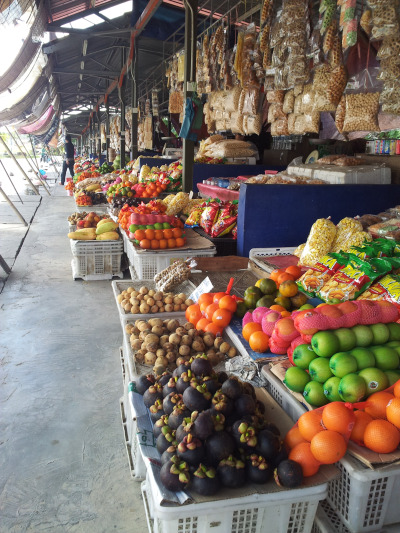
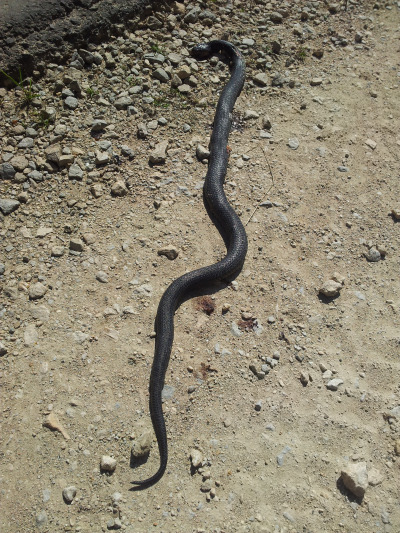

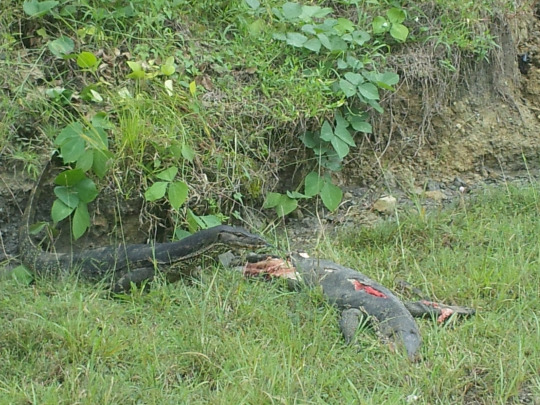




 After a friend travelled to Borneo a few months ago, she told us about these ‘jungle river tours’ that are available in Sabah.
After a friend travelled to Borneo a few months ago, she told us about these ‘jungle river tours’ that are available in Sabah.
The tours travel along the Kinabatangan River where the rainforest creatures still live in the wild. I must admit that this was the main thing that drew me to Sabah itself, as my passion for wildlife exceeds much else in my life. My hope was to find orangutans, proboscis monkeys, pygmy elephants, rhinoceros hornbills and a clouded leopard – and I’d say that having seen 4 of these 5 wasn’t a bad track record for only five nights in the jungle.
 Kinabatangan means ‘china, long river or tree’ and again, it is uncertain where this name originated, but it sure is a very long and rather wide river. It twists and turns back on itself in several places, creating ox-bow lakes; and the river boasts an impressive total length of about 560 kilometres. The area is teeming with wildlife but there are also many parts in Upper-Kinabatangan that have been badly affected by encroaching palm oil plantations. There are conservation efforts to protect the remaining wildlife but clashes between man and nature are often unavoidable.
Kinabatangan means ‘china, long river or tree’ and again, it is uncertain where this name originated, but it sure is a very long and rather wide river. It twists and turns back on itself in several places, creating ox-bow lakes; and the river boasts an impressive total length of about 560 kilometres. The area is teeming with wildlife but there are also many parts in Upper-Kinabatangan that have been badly affected by encroaching palm oil plantations. There are conservation efforts to protect the remaining wildlife but clashes between man and nature are often unavoidable.
Lodges are based mainly in the Sukau town area, but Bilit village also has a few which are on the quieter end of things. We ended up enjoying the first tour so much, that we came back to Bilit Adventure Lodge for a second time, after a week in Semporna. During our tours (in mid-February 2014, still technically ‘monsoon season’ for this area) we managed to get thoroughly soaked at least twice on each tour but the rewards were so much greater than a few hours of driving rain. Read a few Kinabatangan River TripAdvisor reviews for more information.
Our wildlife sightings over the five days were: mouse deer (at our lodge!), proboscis monkey, silver leaf monkey, orangutan, long-tailed macaque, short-tailed macaque, crocodile, monitor lizzards, kettle fish, pygmy elephants, python, yellow ring snake, black squirrel, mudfish (no gills!), red velvet dragonflies, one dead black cobra (huge!) and leeches.
 With a vast array of beautiful birds in this area, some of our special bird sightings (those we actually knew the names of anyway) were: stork-billed kingfisher, rhinoceros hornbill (so impressive!), oriental pied hornbill, wrinkled hornbill, black hornbill, bushy-crested hornbill, blue-eared kingfisher, red coucal, lily hens, black and red broadbill (stunning!), blue-throated bee eaters, lesser fish eagle, serpent eagle, ashy tailorbird, egrets, herons and so many other feathered friends!
With a vast array of beautiful birds in this area, some of our special bird sightings (those we actually knew the names of anyway) were: stork-billed kingfisher, rhinoceros hornbill (so impressive!), oriental pied hornbill, wrinkled hornbill, black hornbill, bushy-crested hornbill, blue-eared kingfisher, red coucal, lily hens, black and red broadbill (stunning!), blue-throated bee eaters, lesser fish eagle, serpent eagle, ashy tailorbird, egrets, herons and so many other feathered friends!
Sadly, we didn’t see: Sumatran Rhinoceros (not seen by our guide in 16 years on the job), clouded leopard, slow loris, tarsiers, sunbear, mongoose and read leaf monkeys.
Overall, it was a fantastic trip and we really appreciated that this could be a once in a lifetime experience. We hope that one day our children may also be given the chance to see these amazing creatures in their natural habitat, provided environmental conservation efforts can keep them protected that long in to the future. It would be such a shame to lose yet another part of God’s wonderful creation to man’s destruction.
Read more about our adventures in the jungle here.
The Borneo jungle beckoned to us long before we finally reached it and the experience of finally being there was truly spectacular! The wildlife was incredible and the scenery like something out of a dream – it is almost too beautiful to describe!
Our jungle destination was the Bilit Adventure Lodge, which is nestled quietly alongside the great Kinabatangan River. We did a two night stay here and then, a week later, returned for another three nights in specifically in search of the elusive pygmy elephants who had managed to evade us on the first two nights.
Bilit Adventure Lodge itself is a real slice of heaven in this already dream-like place, with dark wooden cabins and wooden boardwalks blending perfectly in to the surrounding jungle. Monkeys, tortoises, deer and hornbills were regular visitors within the lodge area and the sounds of the jungle gave us both a frog-lined lullaby in the evenings and a refreshing wake up call in the early mornings.
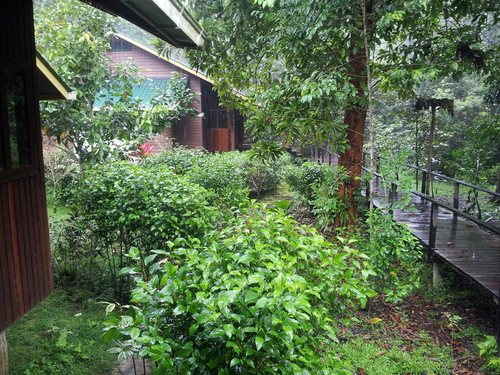
The river cruises are mornings (1 hour) and evenings (2 hours) as this is when the most animals are up and about alongside the river. Despite being a completely open motorboat (with place for only 8 people), regular rain did not deter us from venturing out in search of the fascinating wildlife of the Kinabatangan jungles.
TIP: We wore clothes that could get wet and that would dry easily. We left all valuables locked at the lodge and took only cameras (in waterproof bags). Caps also help to shield eyes from the rain. No shoes needed in the boat, so leave them at the lodge under the dry cover of the communal dining room.
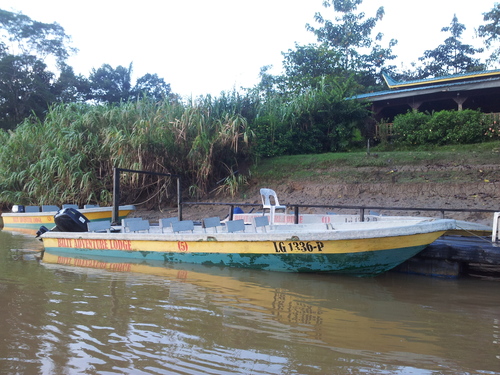
The meal times at the lodge were also a real highlight for us, with delicious cuisine inspired by Malay, Indonesian and Western methods. Tea times were even better, with little cakes, buns or sweet local delicacies that tickled our taste buds and filled the gap for our two hour cruise before dinner.
We did the jungle trek one morning which took us out to one of the ox-bow lakes. We were relieved to have hired gumboots though as we had mud up to our ankles in so many places. Also, with hungry leeches all around (in trees, plants, mud and grass), we were also so glad to have had long sleeves and long pants (everything tucked in tightly to avoid leech bites) as many of the other tourists got nice fat leech surprises when they checked under their clothes! Lucky for us, the leeches ignored us completely.

At the time (February 2014), the dormitory-style rooms were almost fully completed, but lucky for us, we got to stay in the fancy cabins (air conditioning, double beds, en-suite bathrooms, lounge overlooking the jungle, kettle and shower). It was far more than we were expecting and made for a rather wonderful few days enjoying the jungle in luxury. We stayed in the cabins that have names such as ‘Proboscis Monkey’ and ‘Western tarsier’ – the one with the best view was Cabin number 3 (the front-facing room) as this is where I watched a comical pair of Oriental Pied Hornbills who danced along the water tower every morning after tea.
Bilit Adventure Lodge also offered us a chance to plant a tree in their property (at MYR 10) to help replenish the loss of vegetation that is caused each year from flooding. We proudly contributed a small little tree somewhere next to Cabin number 3 and hope to return one day to see if it survives long enough to do its part for the Kinabatangan jungle.
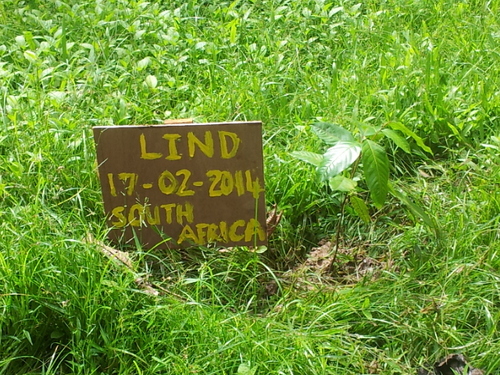
Read more about the tour package here.
This vibrant city is the largest city in the eastern Malaysian province of Sabah, on Borneo. As in most other parts of Malaysia, Kota Kinabalu is home to a wide variety of cultural groups, including some special people groups specific to Borneo, like the Rungus. This province includes 33 indigenous groups speaking 50 different languages and up to 80 different ethnic dialects. Talk about an administrative nightmare for local government!
The province of Sabah has a wide range of attractions that make it a very alluring spot for tourists from all over the world. Beaches, islands, reefs, mountains, parks, nature reserves, museums, temples, mosques, markets, hot springs and rainforests – and Kota Kinabalu is the doorway to it all!
Named for its proximity to Mount Kinabalu, the city of Kota Kinabalu lies on the north-western coast of Sabah and boasts the largest port and population in Sabah. Kinabalu means ‘Chinese/China’ (kina), ‘Widow’ (balu), which perhaps explains why the mountain itself is held in such awe by the local inhabitants. It soars above the rest of the landscape, often swathed in a thick layer of white clouds and stands a lofty 4,101 metres above sea level.
With so much to see and not enough time to see it in, Sabah offers tourists a jam-packed holiday filled with endless activities and interesting places. You will need to take some time out to help it all sink in!
Read more about the following attractions in Kota Kinabalu (NOTE: these are just a few of them that we managed to see):
The Bohol “Country Tour” is a standard tour offered by most travel agents (private and franchised) for exploring the inland attractions of Bohol island. Most tour agents you speak to (willingly or not) will show you the same brochures and quote you the same starting price for this tour.
The tour we settled on was for just the two of us, going to:
We travelled in an air-conditioned van and our tour guide was very professional and knowledgeable about all the attractions that we went to see. We declined going to the zip-lining and the zoo as we wanted to spend unlimited time at the Tarsier Sanctuary, which was one of our main reasons for travelling to Bohol itself.

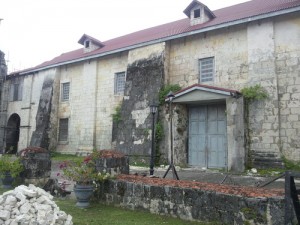
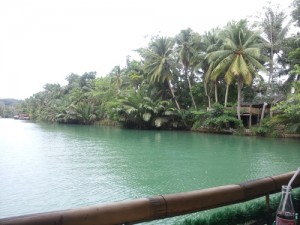
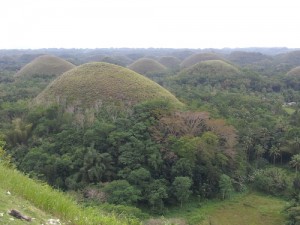
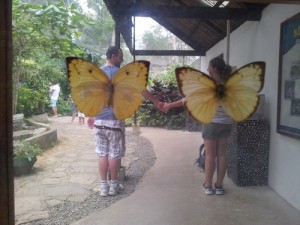

It was a very interesting day with so much to see and admire. The earthquake damage reminded us of the devastation that this community had to endure only a few months before our holiday and it was good to see the work that has gone in to rebuilding and moving forward.
Read more about Bohol here.
This was the Loboc church before and after the earthquake. The damage to the interior part of the island is extensive and rebuilding is slow. Supporting the tour guides and spending money on ‘silly tourist’ things like the River Cruise and the Butterly Farm will help boost the local economy as they rebuild homes, businesses and lives affected after the earthquake of October 2013.

